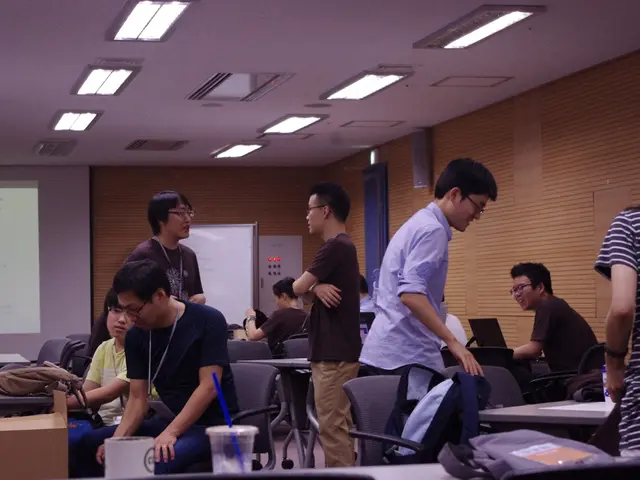Digital Learning Platform Assessment: Implementing Heuristic Analysis, User Testing, and Eye-Tracking Techniques
An e-learning portal designed for university students has undergone a thorough user experience evaluation, combining heuristic evaluation, usability testing, user experience questionnaires, and eye tracking. This methodology, proven effective in identifying and addressing usability issues in digital learning systems, was instrumental in refining the portal to improve learner engagement, comprehension, and satisfaction.
Heuristic evaluation, employing expert reviewers, efficiently detected design flaws based on established principles, thereby identifying more usability problems than usability testing. Usability testing, on the other hand, involved real students performing specific tasks, revealing practical challenges and quantifying metrics like task completion, errors, and satisfaction.
User experience questionnaires gathered subjective feedback on satisfaction, engagement, and perceived usability, providing valuable insights into the students’ mental models and emotional response. Eye tracking objectively measured visual attention and scan paths, uncovering where users focus, hesitate, or miss important content or navigation elements.
The triangulation of these methods enabled a comprehensive evaluation. Heuristic evaluation and eye tracking brought expert and physiological perspectives, usability testing offered task-based real-world insights, and questionnaires captured subjective experience. This approach helped identify both overt and subtle usability issues, prioritize fixes, and validate improvements in the e-learning environment.
Specifically for e-learning portals, this combined approach ensured clear and consistent navigation and interface design practices, smooth functionality of quizzes, videos, and interactivities across various devices and LMS platforms, and addressed accessibility and inclusiveness issues through thorough QA and user feedback. It also ensured user flows were aligned with learner expectations, minimizing cognitive load and confusion.
Eye tracking data were used to reveal usability issues within the portal. The user experience questionnaire was employed to measure the students' satisfaction with the e-learning portal. Few severe usability problems were identified in the usability testing, and many were not spotted in the heuristic evaluation. The identified problems were fixed in the final version of the portal.
Following the refinements, another usability test was carried out to measure the portal's effectiveness and efficiency. According to the results, the students were satisfied with the e-learning portal, finding it efficient and effective. The portal, based on responsive web design, allows access from anywhere, anytime, and on any device, making learning more flexible and convenient for university students.
In conclusion, the synergy of these methods supports systematic, iterative refinement that ultimately enhances learner engagement, comprehension, and satisfaction in e-learning portals. This combined methodology is therefore regarded as a best practice for usability and UX evaluation in digital learning systems.
Read also:
- Strategies for Mitigating Negative Feelings in Customer Interaction with Your Goods or Services
- Is it necessary for concerts to be so excessively loud that ear protection is essential?
- Tech Magnate Elon Musk Accuses Apple of Favoritism, as OpenAI Garners More Popular Support
- Exploring Profitable Business Opportunities in Nigeria: Discover Lucrative Businesses Immediately






